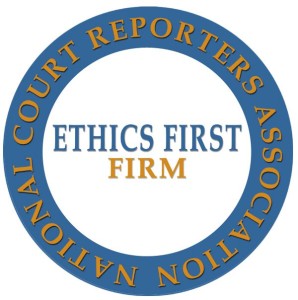How to Get Nonverbal Actions Onto the Court Transcript With Minimal Interruption
The attorney hands his witness a piece of paper. “Which car were you driving?” he asks.
“This one,” the witness responds, pointing at the paper.
“Thank you,” the attorney says.
The questioning is about to move on, but you can’t; as the court reporter, you have to find out what was on the paper and what was pointed to in response—something you can only do if the information is spoken aloud.
Keys to Translating Nonverbal Actions Onto the Court Record
You will interrupt court proceedings for an accurate record—after all, it’s your job. But interruptions could be kept to a minimum if all parties made an effort to clear and direct. Here are a few things attorneys and witnesses should keep in mind in order to make the court record as accurate as possible:
- Gestures. Witnesses may have been told not to nod or shrug in their responses, but there are plenty of other body language responses that just don’t translate to paper. A hurt look expression or “so-so” gesture in response to a question may make a witness’s attitude clear to the jury, but will be useless on the transcript. Attorneys should be quick to add the phrase “let the record show” to any unspoken testimony.
- Interrupted questions. Court reporters are supposed to transcribe chronologically, which can be a nightmare if two or more people are talking at once. In some cases, an interruption can even change the testimony. For example: an attorney begins a question, but is interrupted by the witness’ response. The attorney never stops talking, and completes the question in a way that challenges the witness’ answer. The witness responds by clarifying, talking over the attorney…. and the transcript is just as disjointed on the page as the testimony was in the courtroom.
- Trailing off. While attorneys are well-versed in the problems of communicating effectively on the record, many still fall into sloppy habits. Attorneys may vary their volume level, speak with their back to the reporter, and even trail off mid-sentence without considering how it will read on paper.
- Phone errors. In cases where not all parties in a case are local, it may be necessary to transcribe telephone or Internet-streamed testimony. Even if the line is clear and there is no “lag” in airtime, there is still an added risk of mishearing witnesses. If parties are not visible and more than one is on the line, attorneys can help keep the record clear by having each witness identify him or herself before speaking.
What’s your biggest pet peeve when recording testimony?

